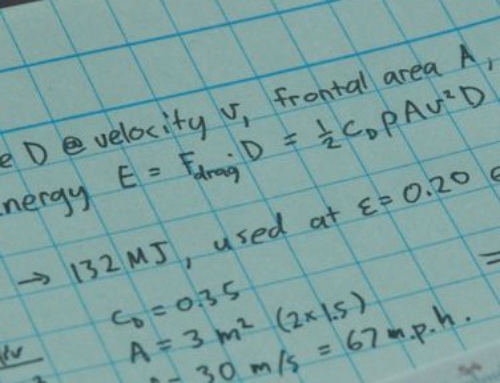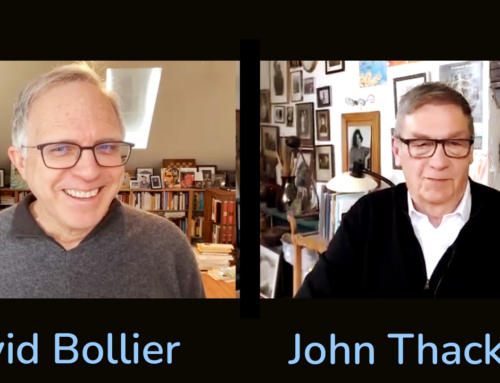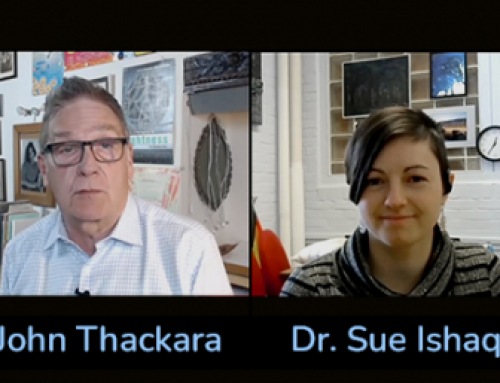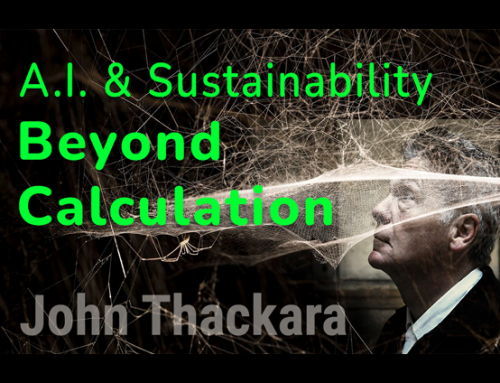[The following is based on the author’s keynote at the Buckminster Fuller Challenge awards in New York on 8 June. He was also on the 2010 jury of the Challenge.]
We will not transition successfully to a restorative economy until systems thinking becomes as natural, for millions of people, as riding a bike. That’s a big ask. How do we get from here, to there?
The Buckminster Fuller Challenge [BFC] is one of the more important projects to address this task – and serving on the jury was by far the hardest work I did last year.
Our task was easily enough stated: select “a bold, visionary, but tangible initiative that has significant potential to solve humanity’s most pressing problems”. To that headline – a challenge on its own – was appended a daunting set of criteria for the assessment of each entry: Did it apply a whole systems approach to all facets of the design and development process? Is the project ecologically responsible? Is it feasible – not just in an ideal world, but using current technology and existing resources.? Can the project’s claims be verified by rigorous empirical testing? And, finally, is the project replicable? Can it scale and be adapted to a broad range of conditions?
When Elizabeth Thompson, executive director of the BFC, asked me, “is the Challenge too niche?” my reply was: Damn right it’s niche – and a good thing, too. No other public design competition that I know comes even close to being this demanding for applicants, nor so thoroughly managed. The Challenge is a long way from the business as usual of mainstream design and its frothy competitions.
By “business as usual” I mean the kind of business that is bewitched by what Dr Chris Seeley calls, in The Fool and the Great Turning “the three impossible fantasies”: the fantasy of limitless growth; the fantasy that actions can be taken that don’t have consequences; and the fantasy that human beings are separate from, and above, the natural world.
These fantasies are not unique to design. They describe the state-of-mind of the industrial growth economy as a whole – the economy which Adbusters has so memorably described as a “doomsday machine”. It’s a doomsday machine because everyone strives after infinite growth in a world whose carrying capacity is finite. The better the economy performs — faster growth, higher GDP — the faster we degrade the biosphere that is he only life support machine we have.
It’s madness – and all over the world people are waking up to the fact that it’s madness. Those awakening include a fair number of designers, architects, and urban planners. But they – we – are still a minority and they – we – are waking up so…very…slowly.
Don’t get me wrong. It’s fantastic that designers have been involved with projects that improve access by poor people to safe drinking water. It’s been inspiring to learn that engineers are figuring out ways to reduce the cost of medical or agricultural equipment. And communication designers, when they raise awareness about pressing social issues, can play a life-critical role in mobilizing people to take meaningful action about them.
I’m also a big fan of the skills and energy that design thinking can bring to the green economy table – such as when design portrays what Fuller described as “preferred states” so evocatively that diverse groups are motivated to try and make those outcomes happen.
With its focus on services, not just on products, design thinking has also started to adopt the whole systems approach that Fuller was advocating a generation ago. Above all, with its strong ethos of prototyping ideas early and often – following Goethe’s dictum of “Begin it now!” – design thinking brings positive energy to bear on intractable situations that might otherwise be bogged down in endless talk and powerpoint slides.
All this is welcome, and impressive. But it’s too slow, not enough – insignificant relative to the bigger picture.
Last year I was invited to a famous design firm on West Coast to talk about “design for social impact.” When I got there, the whole place was locked down by security guards. Wow, I thought! Maybe President Obama is coming to discuss social impact. Silly me. The security clampdown was insisted on by a famous soft drinks firm. I don’t know what their project was about – maybe they were there to redesign the shape of the bubbles – but I doubt that replacing the doomsday machine economy was uppermost in their minds.
Many design firms have added design for social impact to a portfolio that is otherwise shaped by the demands of the perpetual growth economy. The net result is a “do less bad” approach to environmental and social issues. That’s why we hear so much in design-land about “being aware of” or “taking account of” or “moving steadily towards” a respect for environmental limits.
The green entrepreneur Gunther Pauli is scornful of this half-way house approach: ‘A thief who tells a judge he is stealing less than before will receive no leniency. So why do we give each other awards for polluting ‘less’, even though we are still polluting?’. Why, indeed. If one ‘moves towards’ the goal of, for example, net zero impact – but one’s total business is growing – the net effect is to fall behind.
Outside the business-as-usual tent, gradualism is on the retreat. A new kind of economy – a restorative economy – is emerging in a million grassroots projects all over the world. The better-known examples have names like Post-Carbon Cities, or Transition Towns. But examples also include dam removers, seed bankers, and iPhone doctors.
A restorative economy is emerging wherever people are growing food in cities, or turning school backyards into edible gardens. The movement includes people who are restoring ecosystems and watersheds; their number includes dam removers, wetland restorers, and rainwater rescuers. Many people in this movement are recycling buildings in downtowns and suburbs, favelas and slums. They often work alongside computer recyclers, hardware bricoleurs, office-block refurbishers and trailer-park renewers.
You’ll find the movement wherever people are launching local currencies. In their version of a green economy exchange system, 70 million ‘unbanked’ Africans exchange airtime, not cash, using the M-pesa system. For every daily life-support system that is unsustainable now — food, health, shelter and clothing – alternatives are being innovated. Thousands of groups, tens of thousands of experiments.
What these projects have in common is that they are creating value without destroying natural and social assets. I’m not talking here about a 1960s style retreat into an imagined rural idyll, with or without a teepee. On the contrary, the most dynamic restorative design is happening in urban contexts, where it re-imagines the urban landscape itself as an ecology with the potential to support us.
[ This point was emphasized at one BFC discussion I attended last week. Bill Browning, founder of Terrapin Bright Green, explained how ecological history can provide a rich source for urban designers who are willing see nature as a vast source or inspiration and opportunity. Before European settlers came to Manhattan, he told us, the island was home to over 1,000 plant and animal species, all co-existing in a unique ecosystem. Understanding how the island’s water cycle worked then, Browning suggested, can help us redesign ineffective portions of our stormwater drainage systems today so that they can function more seamlessly as a part of the natural water cycle].
In the matter of systems thinking for the masses, a subset of the restorative economy –Transition Towns – is especially significant.
Transition initiatives, which only started six years ago, are multiplying at extraordinary speed. Nearly 800 communities in Europe and North America have been officially designated Transition Initiatives – or cities, districts, villages. There’s even a transition forest.
The transition model is not about the purchase of green artefacts. On the contrary, transition thinking “emboldens communities to look peak oil and climate change squarely in the eye.” The key point is that they don’t just look: Transition groups break down the scary, too-hard-to-change big systems picture into bite-sized chunks. They create a community-level to-do list, with an order of priorities. This to-do list describes such thi gs as the skills and resources that a community will need to cope with the challenges coming down the track – and also how those skills and resources are to be put in place, and who will do what.
The Transition model is powerful because it brings people together from a single geographical area. These people have different interests, agendas and capabilities. But they are united in being dependent on, and committed to, the context in which they live – in all its complexity.
A second reason the Transition model is so powerful is that it uses a process of setting agendas and priorities — the “open space” method — that is genuinely inclusive of all points of view. It gives a voice to all, not just to the loudest.
In addition to the million-plus grassroots projects of restorative economy; and in addition to community-scale networks like Transition Towns; a third zone of activity, also outside the design tent, is also amplifying the reach of systems thinking beyond the academy.
This is the emergence of projects that engage with resource efficiency as a social process, not a technical one. Our BFC winner last year, Operation Hope, exemplified this.
Simply explained, Operation Hope was about the use of cattle to reverse the spread of deserts around the world. But its back story was about the ways energy and nutrients are circulated in natural ecosystems and how humans could learn from this.
I believe all of us on the jury were surprised when we selected , as our clear winner, such a starkly post-Green Revolution and post fossil-fuel project. We seem instinctively to have marked a step beyond the green revolution which, with its hyper-industrialized agriculture, involved massive inputs of petro-chemicals and herbicides, monoculture cropping, and confinement animal feeding operations. Yes, the Green Revolution increased global food production tremendously – but it severely degraded its ecological base in the process.
Project Hope, in contrast, stood for what its founder Allan Savory calls a new ‘Brown Revolution’ that is based on the regeneration of covered, organically rich, biologically thriving soil and brought to fruition via millions of human beings returning to the land and the service intensive production of food.
The fundamental difference between Operation Hope and what went before is that it was – is – about wholes, not parts. Unlike the subject specialization of the industrial growth economy, Savory’s approach is based on the idea that things can have properties as a whole that are not explainable from the sum of the parts.
The same goes for this year’s remarkable winner, Blue Ventures.
By connecting conservation with wealth creation Blue Ventures has found a way to help fishing communities in the developing world experience a counter-intuitive reality: that saving fish doesn’t mean starvation, it means surviving and prospering.
As Alasdair Harris, Blue Venture’s founder and research director told us, “the way we approach marine conservation is not just about setting up protected areas. It’s about alleviation of poverty, empowering women, reducing gender inequity. All those things, from sex and reproductive health to education are directly relevant to conservation. We work in a multidisciplinary, holistic way.”
At the scale of the city, or the city-region, this kind of multi-dimensional, multi-scalar, multi-temporal restorative design re-imagines the man-made world as being one element among a complex of co-dependent ecologies: energy, water, food, production, and information. It takes natural biodiversity and its starting point – with special emphasis on bioregions, foodsheds and watersheds.
It’s not about back-to-nature. It’s about enabling these different ecologies and flows and networks help each other.
To conclude, Elizabeth also asked me to address the question: where next for the Challenge? How [I interpret] can the Challenge help make systems thinking as natural, for millions of people, as riding a bike?
1 Stay niche
The world needs a new kind of design based on an ethical framework in which life is the ultimate source of value; that re-conceives mainstream notions of “development”; and that drives the transition from an extractive economy (minerals and hydrocarbons) to a restorative economy. That framework may be niche now, but it’s the way of the future. And besides, there’s a ton of work to be done re-imagining the kinds of value that design can create. The BFC is one of the few platforms for this essential work – and many many people are waiting for someone to take a lead here.
2 Embrace wickedness
The discontinuities we face – in terms of climate change, financial systems, and resource flows – are all so-called ‘wicked problems’ that do not lend themselves to a single-vision, top down, design approach. Fuller anticipated this uncertainty and counselled people to accept that life always tends to unfold in unexpected ways. Just as one cannot step into the same river twice, each and every design project – and the people, land, and context – are, or should be, unique. I’m sure many people really don’t want to hear more solutions from on-high who can’t possible know what will happen; what they want is more thougthful conversation about open ended questions. BFC is the place for these interactions.
3 Edit out the genius stuff
Peter Drucker famously warned that “no institution can possibly survive if it needs geniuses or supermen to manage it”. The same goes for systems thinking, and systems design. Fuller was a genius who could see what needed to be done – but much of his language is hard for most of us mere mortals to grasp: “reductionist thinking”…”reflexive default”…”design science revolution”….”preferred state” ….”whole systems approach”….”replicable” and so on. By all means use those words backstage – but not in the main hall.
4 Be a breathing space
In 1970 Bucky Fuller wrote, ” I don’t know what I am. I don’t fit into a category. I seem to be a verb”. Many people involved in today’s sustainable alternatives – design’s ‘outliers’ – feel the same. They – we – often plough lonely furrows and need to to support each other more. The BFC can help to meet that need – just as we are doing here this evening: breathing the same air.
5. Prepare to get political
David Orr wisely alerted us to this at this year’s prize giving event. All things bottom-up, spontaneous and emergent are fine – up to a point. But here we are, a generation into all of that, and our overall position continues to decline. As Charlotte du Cann wrote recently, ‘Transition is changing tempo..history is coming into our streets and into our lives and we need to know how to act









